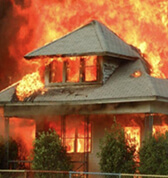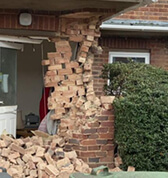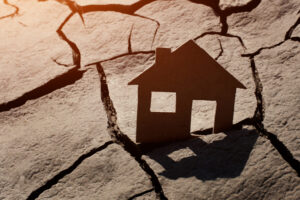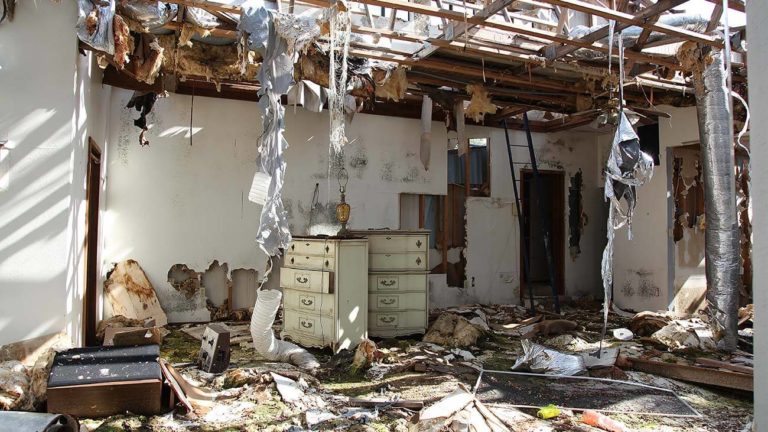Warm Spot on Floor? It Could Be a Slab Leak!
A warm spot on your floor is often no reason for concern. That’s unless it’s a slab leak in which case you need to have it fixed before you suffer major water damage. The problem is, it’s not always easy to determine the cause of a warm or hot spot on your floor.
In this article we’ll look at what is a slab leak, signs of a slab leak, how it can be fixed, and if repairs are covered by your homeowners insurance policy.
Warm Spots on Floors Are Not Uncommon
Many people have at some point in time felt a warm spot on a floor in their house. Although it doesn’t occur frequently, it’s not uncommon either.
There can be a number of explanations for warm spots, and it’s often nothing to be concerned about. Warm spots are often caused by a hot water line that’s close to the surface of a concrete slab.
However, it can be a warning sign of a more serious underlying issue, such as a slab leak.
What Is a Slab Leak?
Many homes are built on a concrete slab foundation that’s normally 4” thick. It’s usually placed on a layer of crushed gravel or sand that acts as a support cushion. Water and sewer lines are installed under the foundation before the concrete slab is poured.
A slab leak occurs when a water line is leaking underneath or inside the concrete foundation of your home.
If left untreated, it might cause significant water damage.
It’s typically caused by a hot water copper pipe that’s leaking in or under the slab.
There are several things which may cause a hot water line to leak. It includes:
Long-Term Corrosion to Copper Pipes
Homeowners are often told that copper pipes should last 50+ years. In reality, they often only last about 20 years. How long they last will largely depend on the wall thickness of the pipe. A pipe with a thin wall thickness will corrode much faster than a pipe with a thicker wall thickness.
As copper ages, the inner lining of the pipe becomes thinner due to wear and tear. This makes the pipe prone to pinhole leaks.
Foundation Movement
Improperly compacted soil or sand may cause movement in the concrete slab foundation of your home. It can also happen when the slab wasn’t dry enough when building commenced.
With the full weight of the house pushing down on the slab some movement can occur which may damage water lines.
In addition, it’s normal for concrete to expand and contract depending on temperatures and moisture levels. This can be exacerbated if the slab has no joints.
Installation Problems
A water line that’s accidentally nicked during installation will have a reduced life span and may start leaking when subjected to pressure. Water lines are also not always properly installed.
Signs of a Slab Leak
If you’re not sure if a warm spot on your floor is caused by a slab leak, here are some signs that could point to a slab leak.
- A sudden unexpected spike in your water and gas bills.
- A drop in water pressure.
- The warm spot wasn’t there before.
The above signs may point to a slab leak, but there can also be other explanations for it.
Once water travels to the surface of a concrete slab it’s only a matter of time before it will affect your flooring.
– Linoleum will often form bubbles if the slab underneath is wet.
– Carpets will feel damp and will start to smell bad.
– Small gaps will appear between solid or engineered wood planks.
– LVPs (luxury vinyl planks) will start to peak (lift up around the edges).
– Most laminate flooring can’t handle water and will quickly show water damage.
– The grout between tiles may darken as water seeps into it.
Note: Water can travel from your floors up your walls. The first sign is often when you notice the appearance of mold or mildew on a wall.
Mold or mildew may not at first be visible on your floors but you might spot it immediately once you lift the floor up.
The best way to confirm a slab leak is to hire a leak detection company or an expert plumber.
Repairing Slab Leaks
Repairing a slab leak isn’t easy and should be left to the professionals. Don’t try to do it yourself. Remember that in most cases your flooring also needs to be replaced.
Insurance companies typically go for what they consider to be the cheapest option. This is normally to dig through the slab, find the cause of the leak and then fix it.
An alternative option is to disable the water line that’s leaking and to run a new line overhead.
Is a Slab Leak Covered By Insurance?
Water damage claims can be very complicated. For example, most homeowners insurance policies limit water damage coverage to water that hasn’t entered your home from the ground.
This is especially the case if the water damage wasn’t caused by the sudden and accidental bursting of a pipe but occurred gradually.
Note: Fighting an insurance claim for water damage with an insurance adjuster can be very difficult. It’s highly recommended that you get a reputable public adjuster on your side who will fight on your behalf.
Click here to watch our video.
Conclusion
There are several reasons why you may have a warm spot on your floor. Although it’s often nothing to worry about, it can be a sign of a serious underlying problem. A water pipe that’s leaking inside or underneath the concrete slab foundation in your home may result in a slab leak.
What may start off as a warm spot can quickly turn into a damp or wet floor, leading to water damage. And as the slab gets saturated the structural integrity of it may be compromised.
To make matters worse, your insurance company may repudiate a claim that wasn’t caused by the sudden and accidental bursting of a pipe.
Avner Gat, Inc. has 15+ years of experience as a public adjuster. We protect homeowners from the games and fine print that insurance companies are known for.
Call us at (818) 917-5256 to find out how we can help you to get the best possible settlement from your insurance company.



































